Are the traces of human use of fire found in the Tunel Wielki Cave the oldest known so far from Poland?
The small and inconspicuous Tunel Wielki Cave, located in the Ojców National Park, has recently become famous in the scientific world due to a discovery made by an interdisciplinary team led by Dr. Małgorzata Kot from the Faculty of Archaeology of the University of Warsaw (FAUW). Scientists have determined that the flint artefacts derived from it are among the oldest finds of this type known from the area of Poland, and their creator could be Homo heidelbergensis, the ancestor of the Neanderthal (Homo sapiens neanderthalensis).
These finds are a set of flints and animal bones excavated from the cave in the 1960s during the archaeological excavations conducted by Professor Waldemar Chmielewski. Initially, they were thought to be little more than 40,000 years old. However, recent studies have shown that this age was greatly underestimated. Rodent bone analysis by Dr. Claudio Berto from FAUW dated the finds to half a million years ago, corresponding to the MIS 14-12 (Marine Isotope Stages) chronology. Analysis of other animal remains, from the same layer as the flint artefacts, carried out by Dr. Krzysztof Stefaniak from the Faculty of Biological Sciences of the University of Wrocław, confirmed this estimate. The archaeological material shows the presence of bones belonging to representatives of the fauna of the Middle Pleistocene, including the Mosbach wolf (Canis mosbachensis), the ancestor of the cave bear (Ursus deningeri), lycaon of the Canidae family (Lycaon lycaonoides) and two species of felids – Panthera spelaea fossilis and Panthera gombaszoegensis.
Dr. M. Kot's team not only analyzed archival archaeological materials but also conducted their own excavations. During them, in 2018, a single piece of charcoal was found in the layer with flint artefacts. Dr. Magdalena Moskal-del Hoyo from our Institute, who participated in the project, determined that it originated from beech wood (Fagus). It is not known whether this charcoal emerged in a hearth used by ancient humans, but the presence of a heated flake among the flint assemblage suggests that people of that time were able to use not only simple tools but also fire.
Such well-documented finds from the Lower Paleolithic are extremely rare in Europe and in the world and prove the uniqueness of the site under study.
More information about the discovery is available on the pages of Dziennik Naukowy (in Polish only).
See also the original article:
Kot M., Berto C., Krajcarz M.T., Moskal-del Hoyo M., Gryczewska N., Szymanek M., Marciszak A., Stefania K., Zarzecka-Szubińska K., Lipecki G., Wertz K., Madeyska T. 2022. Frontiers of the Lower Palaeolithic expansion in Europe: Tunel Wielki Cave (Poland). Scientific Reports 12: 16355. DOI
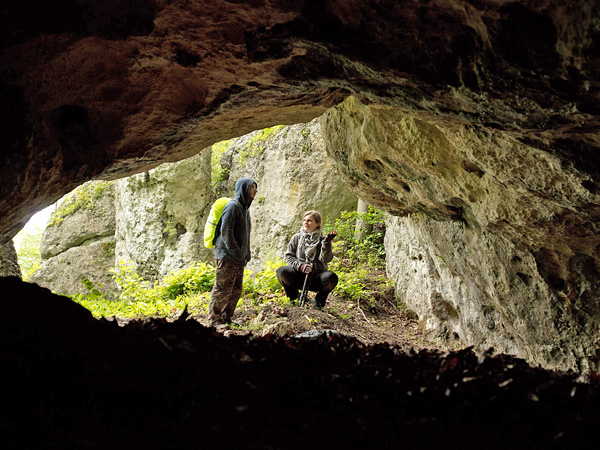
Dr. Claudio Berto and Dr. Małgorzata Kot talking at the entrance to the Tunnel Wielki Cave.
Photo: From the Małgorzata Kot's archive.
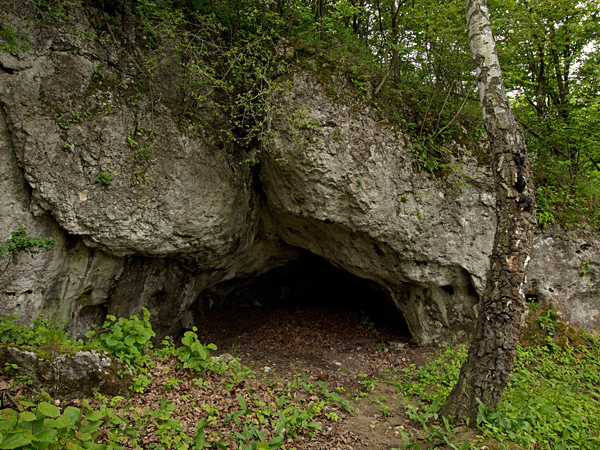
Entrance to the Tunel Wielki Cave.
Photo: Małgorzata Kot.
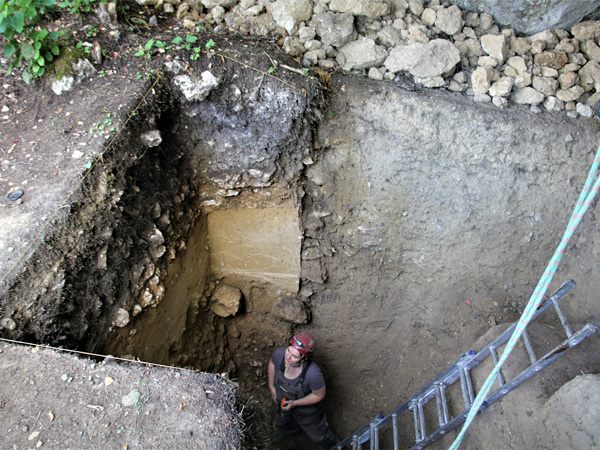
Archaeological excavations in the Tunel Wielki Cave in 2018.
Photo: From the Małgorzata Kot's archive.
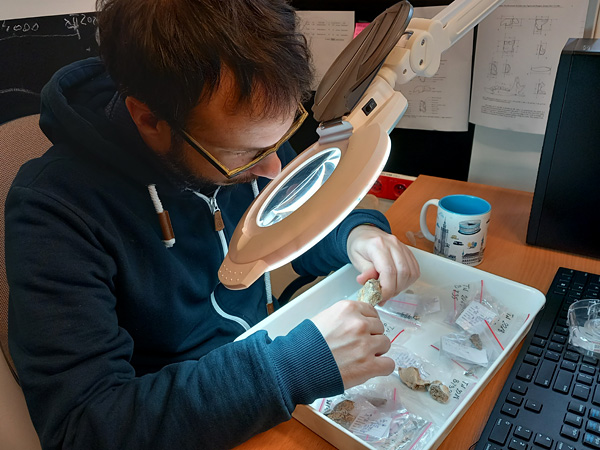
Dr. Claudio Berto analyzing the rodent remains of the Tunel Wielki Cave.
Photo: Małgorzata Kot.
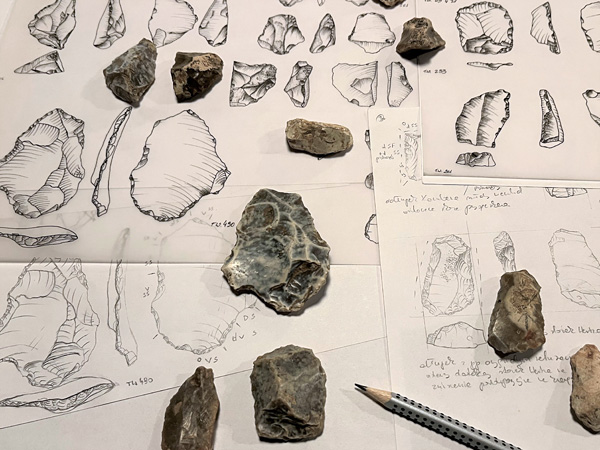
Flint artefacts found in the Tunnel Wielki Cave and their drawings.
Photo: Małgorzata Kot.





